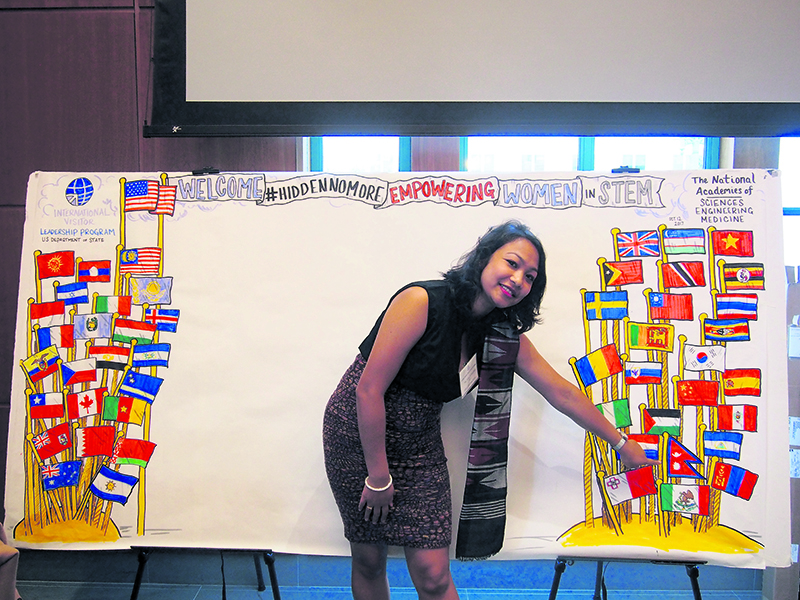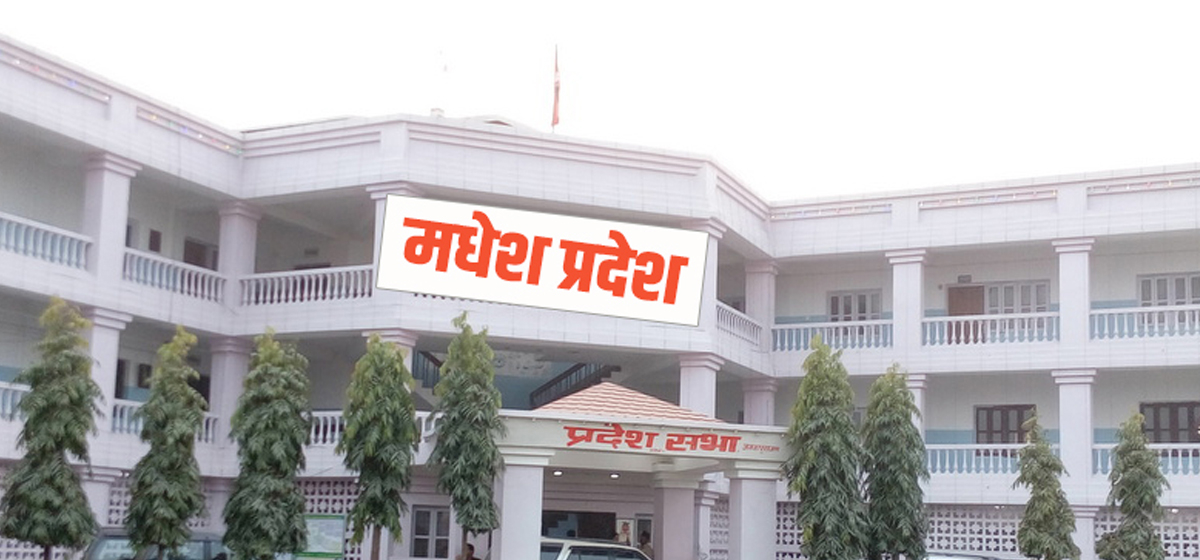
OR
The importance of woman in STEM
Published On: December 8, 2017 08:10 AM NPT

STEM here stands for the careers that parents, teachers and society in general have struggled to motivate students, female students in particular, to pursue. Science, Technology, Engineering and Mathematics or STEM, thus, has become renowned as a curriculum based on the idea of educating students in these specific disciplines. Last month, Irina Sthapit, 24, coordinator at Karkhana received an invitation to join and represent Nepal in one of their latest initiatives, International Visitors Leadership Program's (IVLP) Hidden No More: Empowering Women Leaders in STEM.
Sthapit has majored in Electronics and Communication but shares that she too remembers the self-doubt that had initially plagued her. In fact, she credits her father for bolstering her confidence to study the subject. And today it is apparent how she is a part of a minority. Female peers who stayed put in the field and have built a career on it are few and far between. Sthapit also shares there aren’t any local female mentors that she can look up to.
However, working at Karkhana and being an educator, it isn’t like she hasn’t sensed the potential of change. In actuality, the scene is looking very promising indeed. She talks about all the young girls that frequently attend their workshops and other programs. This apparently also made the invitation to the Hidden No More program that much more appealing.
According to Sthapit, she didn’t go in with any expectations. She explains, “The three-week program was bringing 47 amazing women in STEM from 47 different countries. There was going to be speakers, panels, museum, and school visits as well as chances to experience maker’s spaces. It was going to be a great way to network, learn, and share.”
And network, learn as well as share they did. As they travelled through a couple of places in the United States of America with their group, Sthapit says there were discussions not only on matters of their respective subjects but also the impact culture, society and economy had on its perspectives.
When asked about the biggest takeaway from the program, Sthapit doesn’t exactly talk about workshop ideas or future project plans. “We shall eventually get to them slowly,” she says. What has stuck with her seems to be the reality of women in STEM.
“We had women with PhDs in their field. We had researchers, professors, entrepreneurs and they could all relate to one thing: The struggle for acceptance and acknowledgement,” says Sthapit, before adding, “I genuinely didn’t expect this to be the case in developed countries.”
Participants from different countries were encouraged to share their own study and work experiences, followed by a question and answer round. The gist that came out of it was the importance of representation of women in STEM.
As Sthapit recalls, “There were long talks on impostor syndrome and how woman are more prone to it.” The phenomenon basically refers to individuals who are incapable of fully accepting and appreciating their capabilities as well as accomplishments. This often leads to “the persistent fear of being exposed as a fraud.”
Sthapit confesses to relating with the feeling and she clearly wasn’t the only one in the program. There are subtle ways of building one’s confidence and, where empowering women in STEM is concerned, she believes the strength gained from representation or the dejection from the lack thereof was something that everybody had personally experienced.
“Nothing beats seeing other girls and women engaging in the fields of science, tech, engineering and mathematics. Visibility has proved to be crucial,” she says.
Now back home, back at work in Kharkhana, Sthapit says she has had elaborate discussions on the matter with her co-workers. Inspired by the movie Hidden Figures, an American biographical drama film about three brilliant African American women who served as the brains behind one of the greatest operations in NASA history, she says she has even hosted a screening of the movie at the office as well, simply because it’s nice to feel represented.
Similarly, on their off days, Sthapit shares that she and the participants of the Hidden No More, STEM program had got together to build an interactive website, a map that can trace the work of other women in STEM as they travel to various countries. The plan to complete that is also in the pipeline.
As a country that is only slowly starting to make space for women in such technical disciplines, Sthapit admits there is still a long way to go in Nepal. However, in the meantime, we can’t underestimate the importance visibility of women in the field. This kind of presence will surely leave its mark.
(Priyanka Gurung)
You May Like This

Journey with dolls
In Greece and Rome, upon reaching puberty boys dedicated their toys to the Gods and girls dedicated their toys to... Read More...

Woman who has baby with mom's womb: it's "science fiction"
BERGSHAMRA, Sweden, Oct 8: Emelie Eriksson has a bond with her son that hardly seems possible: She and her son were born... Read More...

Woman dies after falling from cliff
BAITADI, July 30: A woman died after falling from a cliff at lower Swarad of Baitadi on Saturday. ... Read More...








Just In
- Russia warns NATO nuclear facilities in Poland could become military target
- 16th Five Year Plan: Govt unveils 40 goals for prosperity (with full list)
- SC hearing on fake Bhutanese refugees case involving ex-deputy PM Rayamajhi today
- Clash erupts between police and agitating locals in Dhanusha, nine tear gas shells fired
- Abducted Mishra rescued after eight hours, six arrested
- Forest fire destroys 13 houses in Khotang
- Lungeli appointed as Minister for Labor and Transport in Madhesh province govt
- Bus knocks down a pilgrim to death in Chitwan










Leave A Comment